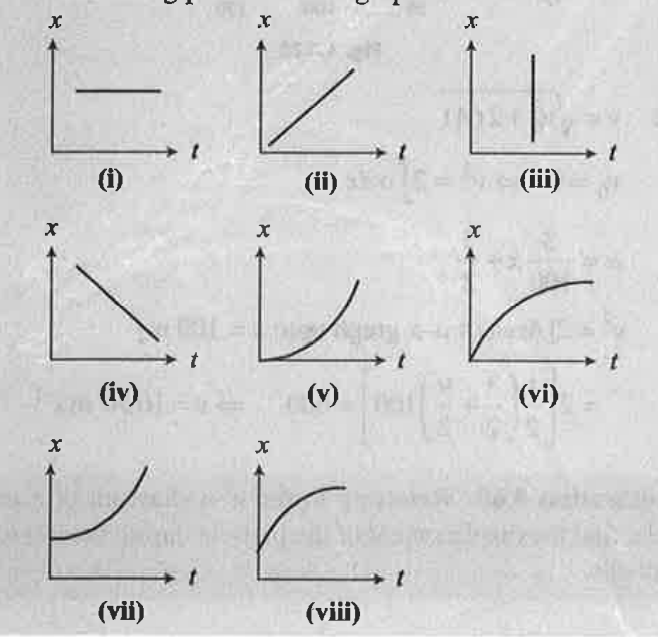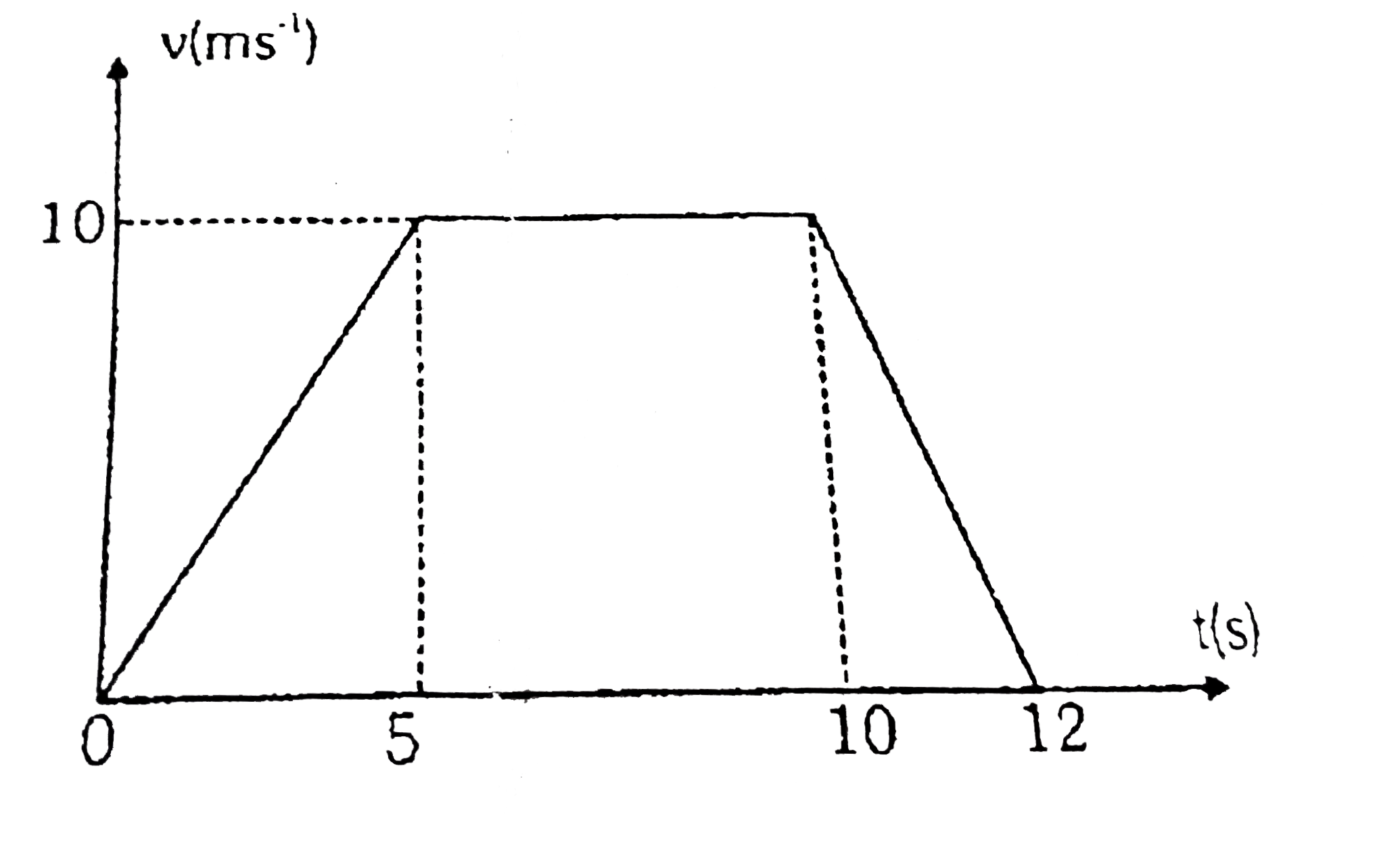a. What can you say about velocity in each of the following position-time graphs?
 .
.
b. The slope of the velocity-time graph is equal to acceleration. (True//False)
c. What does the area under acceleration-time graph represents?
d. Can velocity-time graph be parallel to the velocity axis? (Yes//No)
e. What is the slope of the fraph in uniform motion? .
a. We know that the slope of the position-time graph is equal to veloctiy. So
i. as the slope is zero it is zero velocity.
ii. As the slope is positive and constant, it is constant positve velocity .
iii. As the slope is infinite, it is infinite velocity.
iv. as the slope is negative and constant, it is constant negative increasing velocity .
vi as the slope is positive and decreasing, it is positive increasing velocity.
vii. as the slope is positive and increasing, it is positive increasing velocity.
viii. as the slope is positive and decteasing, it is positive decreasing veovity.
b. True, as acceleration.
c. Chagein velocity
d. No because it will indicate infinite acceleration, which is not poasible
e. Zero, becoause acceleration will be zero inuniform motion.
Topper's Solved these Questions
- KINEMATICS-1BOOK - CENGAGE PHYSICSCHAPTER - KINEMATICS-1EXERCISE - Subjective
29 Videos
- KINEMATICS-1BOOK - CENGAGE PHYSICSCHAPTER - KINEMATICS-1EXERCISE - Single Correct
52 Videos
- KINEMATICS-1BOOK - CENGAGE PHYSICSCHAPTER - KINEMATICS-1EXERCISE - Exercise 4.3
15 Videos
- GRAVITATIONBOOK - CENGAGE PHYSICSCHAPTER - GRAVITATIONEXERCISE - INTEGER_TYPE
1 Videos
- KINEMATICS-2BOOK - CENGAGE PHYSICSCHAPTER - KINEMATICS-2EXERCISE - Exercise Integer
9 Videos
Similar Questions
Knowledge Check
The slope of velocity-time graph for uniform motion of an object is
AUnityBZeroCInfiniteDMore than unity but has some finite value
Draw displacement time and acceleration -time graph for the given velocity-time graph

View SolutionDraw displacement time and acceleration -time graph for the given velocity-time graph

View SolutionThe slope of velocity-time graph for uniform motion of an object is
View SolutionWhat can you say about the motion of a body if :
(a) its displacement-time graph is a straight line ?
(b) its velocity-time graph is a straight line ?
View SolutionDraw the velocity-time graph for uniformly accelerated motion. Show that slope of the velocity-time graph gives acceleration of the object.
View SolutionWhat can you say about the motion of an object whose distance-time graph is a straight line parallel to the time axis ?
View SolutionWhat can you say about the motion of an object whose distance-time graph is a straight line parallel to the time axis ?
View Solution
